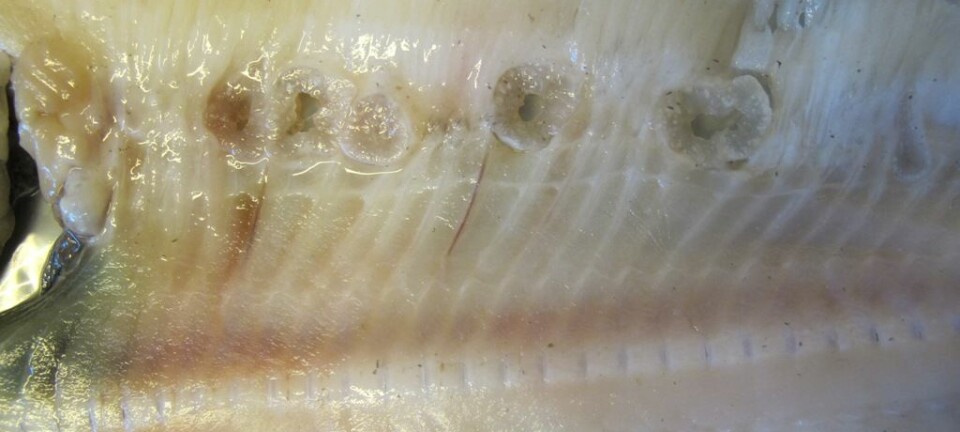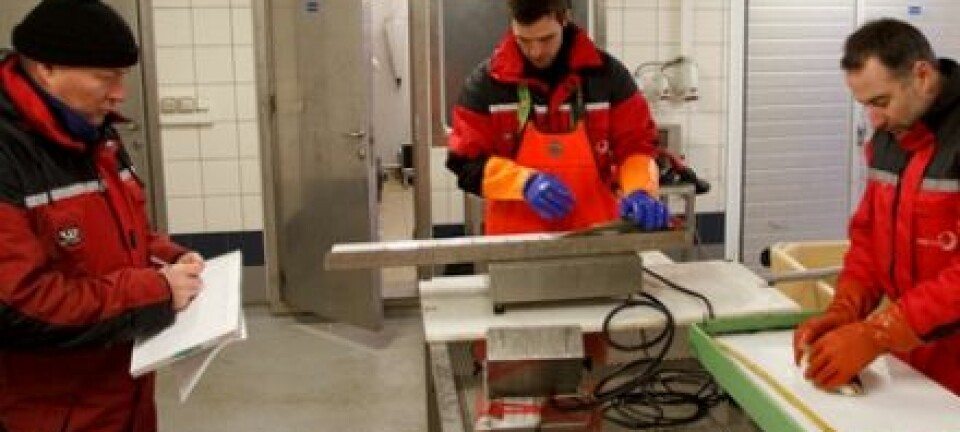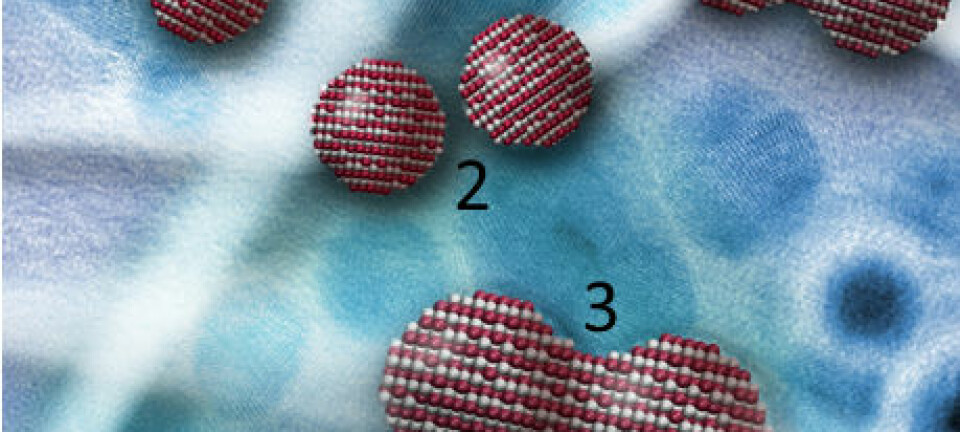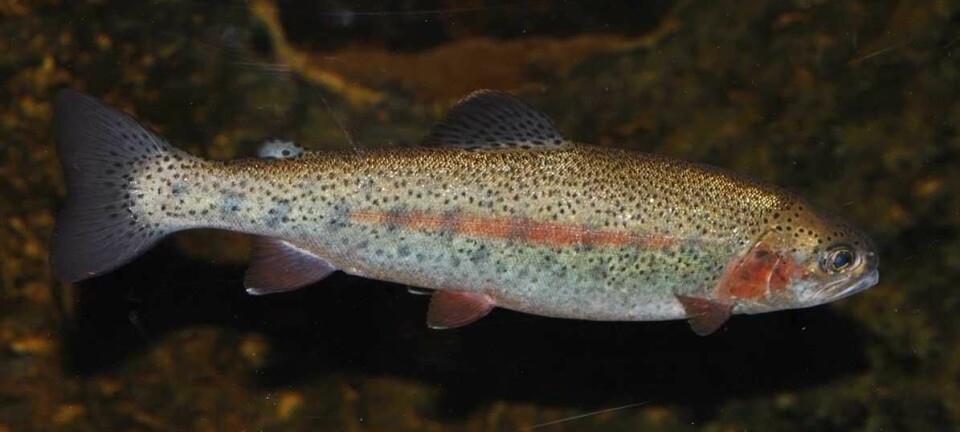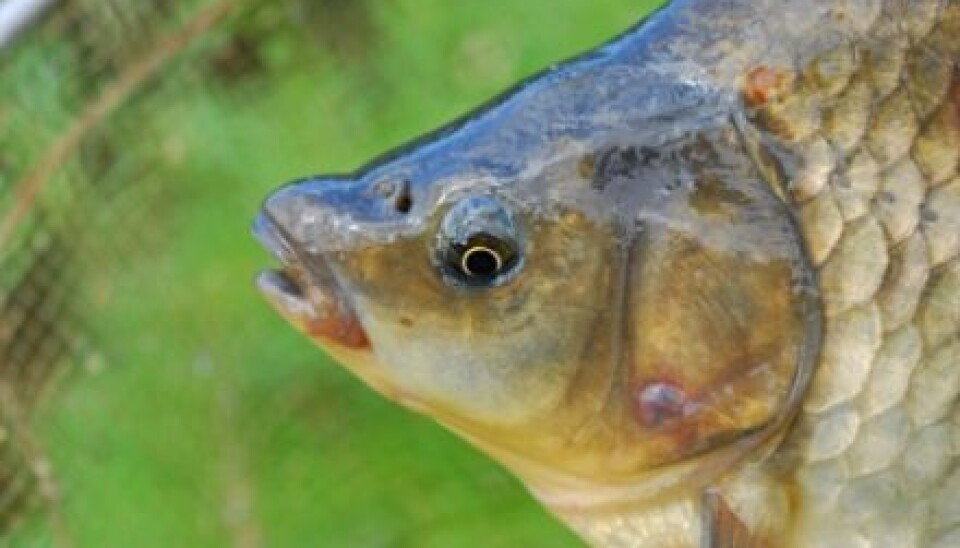
Nanoparticles impact fish through the food chain
Nanoparticles can pass right through the ecosystem and harm fish at the top of the food chain.
A new Swedish study shows that nanoparticles can survive several links in the food chain.
Algae were grown in a tank of water containing nanoparticles. The algae absorbed these particles,
The algae were then fed to animal plankton, and finally the plankton was fed to fish.
The behaviour of the fish that consumed these zooplankton changed.

The fish simply lost their appetites. Scientists are pinning the blame on the nanoparticles.
Stopped chasing plankton
“The fish stopped eating and searching for food,” says researcher Tommy Cedervall, of the University of Lund in Sweden.
Scientists found it remarkable that the fish let zooplankton swim in and out of their mouths without even trying to eat them.
When placed on a moderate diet, the fish that had been exposed to zooplankton containing nanoparticles didn’t lose weight, according to the article in the journal PLoS One.
Hampers metabolism
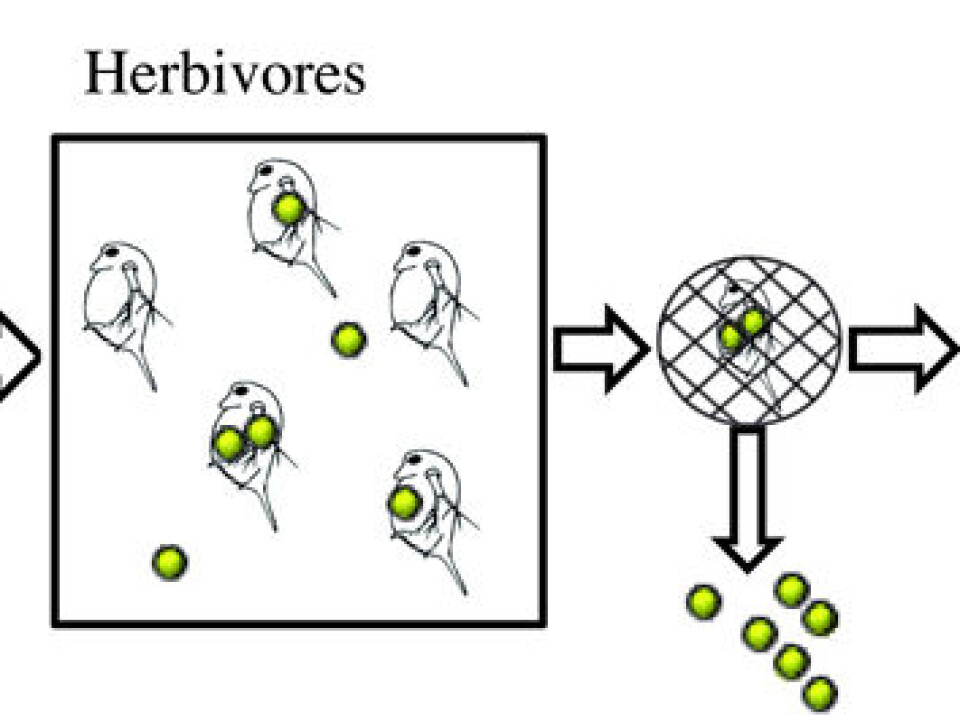
The scientists think that nanoparticles cling to certain types of proteins the fish need to transport fats through their bloodstream.
They found clear indications of a decrease in the burning of fats in the fish, which supports this hypothesis.
As seen with environmental toxins such as DDT, heavy metals and hormone suppressants, it’s long been known that toxins can be carried up the food chain and accumulate in animals atop the pyramid.
This is the first study showing nanoparticles passing up links in the food chain in the same way.
Nanosecurity

The Swedish scientists work in the field of nanosecurity. They map which kinds of nanoparticles are dangerous and which are not.
“The goal of our research is to find out how to make particles that won’t be harmful,” says Cedervall.
The method they have now used can possibly be turned into a way of testing nanomaterials prior to their being used in manufactured products.
Lack of regulations
Nanoparticles pose a headache for authorities who want to enact legislation and regulations to prevent negative impacts on the environment.
Testing methods are lacking when it comes to the potential dangers of different nanoparticles. That’s a big problem, according to researcher Eivind Farmen at the Norwegian Institute for Water Research (NIVA).
Farmen, who is an expert in environmental threats to fish, thinks it’s now vital that we establish systems for regulating the use of nanomaterials so we can prevent their damage to the environment.
Array of effects
Research of the environmental impacts of nanoparticles has focused on the issue of whether it is the tiny size of the particles or their chemical properties that are most important.
Farmen thinks results in the last few years might indicate there is no general nanoparticle effect. As a result, he doubts the method used by the Swedish scientists on fish can be used universally.
“Nanoparticles are so diverse I’m not so sure a single test can be made that would apply to all,” he says.
-----------------------------------------
Read this article in Norwegian at forskning.no
Translated by: Glenn Ostling

